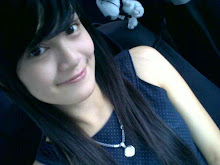 The band was subject to rapid success from the time of its formation in 1969, and an equally rapid demise, breaking up in 1972, shortly after the release of their first album.
The band was subject to rapid success from the time of its formation in 1969, and an equally rapid demise, breaking up in 1972, shortly after the release of their first album.
The original band was composed of John Witmer (vocals), Peter Boyko (guitar), Gary Penner (bass), John ("B.J.") Bjarnason (harmonica) and Ron Sullivan (drums). By their second performance, they were an opening act for Led Zeppelin. They later opened for or played with such artists as the Paul Butterfield Blues Band, Johnny Winter, Big Mama Thornton, Screaming Lord Sutch, Elvin Jones, Chuck Berry, B.B. King, Bobby Blue Bland, Buddy Guy, Lonnie Johnson and Doug Kershaw.
The band's rapid early success is exemplified by their appearance at the historic 1969 Toronto Rock and Roll Revival concert, which was headlined by The Doors and at which John Lennon's Live Peace in Toronto 1969 album was recorded. At the time, the band was less than a year old, with band members still being in their teens or early twenties.
The band's concert performance locations during their first year included the prestigious Convocation Hall, where they opened for Chuck Berry, and Massey Hall, where they opened for Bobby "Blue" Bland, Buddy Guy and Lonnie Johnson, in the latter's last public appearance. The band then returned to Varsity Stadium for the Toronto Rock Festival, on March 26, 1970, where they shared the bill with Canned Heat, Small Faces, Amboy Dukes, The Zombies and Brian Auger and The Trinity, among others.
Band personnel at the time of recording the first album were Richard Fruchtman (bass, vocals), Wayne Wilson (drums), Dave Morrison (guitar, vocals), Michael Pickett (harmonica, vocals) and John Witmer (vocals). Witmer was a founding member and Wilson an early member of the band, in 1969; Pickett had joined in 1970, replacing original harmonica player John ("B.J.") Bjarnason, who had left the band to study to become a chiropractor. The album was produced by noted American producer and engineer Johnny Sandlin, associated with the Allman Brothers Band, among others, and featured Chuck Leavell, then of the Allman Brothers, on keyboards.[8]
The band regrouped on occasion after 1972 and in 1981 regrouped for a recorded reunion performance at Toronto's famed El Mocambo club, resulting in their second, and final, album release. At that time, original members Witmer and Pickett were joined by John Tilden (guitar), Rick Burkett (bass), Ed White (drums), John Johnson (tenor saxophone), Simon Wallis (baritone saxophone) and Dave Dunlop (trumpet).
listen here
Thursday, January 12, 2012
Whiskey Howl - Whiskey How 1972
Popular Posts
-
When you think of the Doors , "guitar" isn't the first thing that usually comes to mind ( Jim Morrison 's manic persona an...
-
The only album by the Steve Baron Quartet was a fitfully interesting but uneven effort, jumping between Baroque folk-rock, moody early si...
-
David Lannan was a street singer from San Francisco, CA. 1970's Street Singer was recorded live outside The F.B.I. Stock Exchange City H...
-
Kathy McCord - Kathy McCord 1970 Kathy McCord released a lone self-titled LP in 1970, the first release from Creed Taylor ’s CTI Records, ...
-
Ahmed Abdul-Malik was one of the first musicians to integrate non-Western musical elements into jazz. In addition to being a hard bop bas...
-
Although it was a disappointing seller and signaled the start of Donovan 's commercial decline, Open Road could have been a new beginn...
-
A wild, freewheeling, and ultimately successful attempt to merge psychedelia with jazz-rock, Soft Machine 's debut ranges between loving...
-
The Small Faces were the best English band never to hit it big in America. On this side of the Atlantic, all anybody remembers them for i...
-
Redbone was a Los Angeles-based group led by Native American Pat and Lolly Vegas . They hit paydirt in 1974 with the million-seller "...
-
Kingfish is a San Francisco-influenced band which originally featured the Grateful Dead's Bob Weir , singer/harpist Matthew Kelly , bas...











0 comments:
Post a Comment